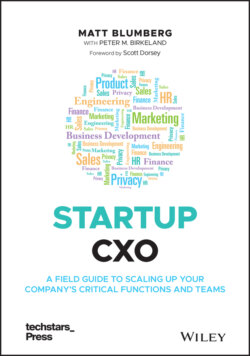Читать книгу Startup CXO - Matt Blumberg - Страница 48
Chapter 25 Diversity, Equity, and Inclusion (DE&I)
ОглавлениеI noted earlier that building an inclusive culture will reap many rewards in the long term. In every aspect of the People function you can build practices to interrupt unconscious bias and create a more inclusive workplace. Intentionally building DE&I into the foundation of your organization is much more impactful than trying to retro‐fit it later. I use the term “DE&I” rather than just diversity or inclusion, because it's not enough to bring in diverse talent to make sure that your organization is representative of your location. If you don't compensate people equitably, then you won't retain or engage your newly diverse workforce. If the people you hire don't feel included, they can't have the psychological safety that is required to be the best team member they can be. It's a lot of work to uncover and interrupt our cultural biases, but it's critical for a number of reasons:
It's the right thing to do.
There's a business case for diversity, demonstrating that more diverse Boards and leadership teams have higher valuations and growth, and diverse teams are more innovative.
Building a just and equitable company where people have access to opportunities is becoming more expected by the people you want to hire. It is the new standard for being a great place to work.
DE&I won't just happen on its own. Even with the best intentions, there is systemic and individual bias. To overcome these, you must be intentional about adapting traditional methods of sourcing, recruiting, compensation, promotions, and performance management. You need to counter the biases in our systems and help people understand how to proactively engage in inclusive behaviors.
If you don't start out with DE&I as the core cultural value at your company, what can you do, as Chief People Officer, to get there quickly? One tactic we found helpful at Return Path was to partner with an organization that was an expert in shifting to a DE&I‐focus. We partnered with the National Center for Women in Information Technology (NCWIT), which is where we learned a lot about DE&I (and not just about women in technology!). Our partners at NCWIT, and especially Jill Reckie, helped us to think about DE&I strategically and comprehensively. Leveraging our learning and partnership with NCWIT, we built an internal DE&I team that was incredibly impactful. A senior People team member led the overall initiative which included volunteers from across the organization split into work groups, focused on different parts of the employee lifecycle. In many cases, the People team functional lead participated with the work group so they could implement the programmatic recommendations. Even with strong systems set up, we always looked for ways that unconscious bias was filtering in. Given that we all have our own personal experience and journey and it's hard to deeply understand another person's journey through our own personal lens, it was really important to include diverse voices and perspectives in these work groups.
See www.Startuprev.com for a chart showing our work groups and examples of the work completed in each.
